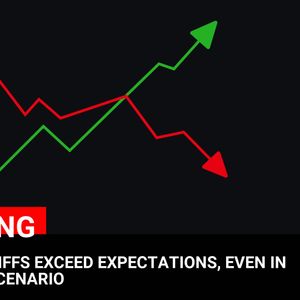Vaulta, formerly known as EOS, is emerging from its past with a renewed focus on practical finance and compliance-first blockchain infrastructure. The network recently partnered with digital asset platform VirgoCX to launch VirgoPay, a cross-border remittance app leveraging stablecoins to slash fees and speed up transactions. With Vaulta serving as the default settlement layer, VirgoPay aims to deliver near-instant payments across jurisdictions, beginning with markets like the U.S., Canada, Brazil, and Hong Kong. In this Q&A, we spoke with Yves La Rose, Founder and CEO of Vaulta about how its architecture, governance upgrades, and financial tooling set it apart from past iterations, and from today’s competition. Vaulta is a rebrand of EOS, a network criticized a long time ago for validator collusion and governance issues. What concrete changes have been made to governance or consensus to avoid repeating those same flaws? Two main early objections to EOS were indeed: Originally the EOS constitution sought to forbid social pressure vote buying, however on-chain enforcement proved to be unworkable. Paying a share of their income to their stakers became accepted over time as normal for validators. Ironically, EOS was mostly hampered by too much decentralization in decision-making, so halting development. Huge projects were shelved without a “central coordinator” or a uniting basis. What then sets Vaulta unique? The EOS Network Foundation (ENF) was founded in 2021 by the ecosystem to act as a growth plan and uniting agent. This “centralizing force for good” now distributes community resources toward technical developments, marketing, and infrastructure, closing the gaps that formerly hampered EOS’s progress. Spring Hard Fork and New Consensus: With the rebranding to Vaulta, the community also embraced a next-generation consensus model that further distributes the core algorithms, thus decentralizing them further. This change answers earlier governance issues by: Distribution of validation roles among a larger spectrum of participants to help reduce the likelihood that a small clique will have too much influence. Though the foundation and community can suggest code changes, token-holder votes finally decide on the matter. Although most proof-of-stake networks now follow a practice whereby validators reward their stakers, the combination of the ENF (now Vaulta Foundation), more advanced on-chain technologies, and an active token-holder community helps to better balance necessary coordination with distributed decision-making. VirgoPay relies heavily on USDC and USDT. What’s your plan if a stablecoin depegs or is frozen? Are users exposed to systemic risk tied to the stablecoin issuers? Though Vaulta itself does not build VirgoPay, it does depend on Vaulta as the default settlement layer. That said, any platform leveraging centralized stablecoins runs the same macro risks—depegging or address freezes. Among the main mitigating techniques are: Vaulta natively supports Tether (USDT), and via our Bitcoin transport layer (exSat), it also supports USDC. This gives flexibility; should one stablecoin have problems, application developers—like VirgoPay—can swiftly change to substitutes. Apps can use automated triggers if a stablecoin’s peg deviates beyond reasonable thresholds—halting inflows or swapping users to safer assets—because transactions and prices are transparent on-chain. Should users lose faith in a specific issuer, they can decide to hold other digital assets on Vaulta or even hold several stablecoins. No blockchain can ultimately completely remove the counterparty risk associated with outside stablecoin issuers. But Vaulta’s open architecture, several stablecoin choices, and strong toolkit for on-chain monitoring help payment solutions like VirgoPay to handle and reduce possible fallout. Speaking of which, are stablecoins natively issued on Vaulta, or bridged? If bridged, how are funds secured and audited? What’s stopping this from becoming another cross-chain vulnerability? Vaulta offers native as well as bridged stablecoin capability: USDT, Native Tether: Tether Limited natively deploys USDT in line with other major blockchains, treating the network accordingly. Tether is issued straight from Vaulta. Using a bridging solution across exSat, our Bitcoin Transport Layer, USDC via exSat unlocks cross-chain liquidity from Bitcoin and other chains on Vaulta. This approach assures robust security policies and expands Vaulta’s stablecoin options. How are audited and secured these bridges? Leading third-party blockchain security firms carefully review and audit the smart contracts and bridging systems on their own. Trackable in real-time, locked collateral and minted tokens let the community verify that everything fits. Should a security flaw come to light, our on-chain governance lets the bridging contracts be replaced or changed without halting the entire network. By means of careful audits, open proof-of-reserves, and a governance structure capable of rapid reaction should vulnerabilities surface, Vaulta’s bridging architecture essentially seeks to reduce cross-chain risk. You’re launching in Canada, Argentina, and Brazil—all of which have strict rules on crypto and stablecoins. How are you ensuring compliance in each market, and what happens if regulators crack down? Vaulta itself is a permissionless, global network; compliance becomes a matter of local on-ramps and applications deployed atop. VirgoPay, for instance, must abide by KYC, AML, and national licensing guidelines specific to every country. Virgo is already registered as an MSB in Canada. Legal criteria (such as transaction reporting or user onboarding) will be fulfilled by mixing with local financial institutions or payment providers in the 6 jurisdictions they operate in, U.S., Hong Kong, Canada, Argentina, Brazil and Australia. Usually starting in smaller pilot projects, jurisdictional-specific rollouts help to ensure local compliance. Should authorities tighten rules, the relevant front-end—like VirgoPay—can either change or suspend particular services in that jurisdiction. On a global scale, Vaulta’s fundamental chain is still functioning without any changes. Stressing possible benefits for remittances, financial inclusion, and cost savings, the Vaulta Foundation and related stakeholders actively interact with legislators to clarify how Vaulta’s distributed infrastructure runs. Every local partner can negotiate the legal environment by controlling compliance at the application level, preserving the permissionless character of the Vaulta protocol itself. As a follow up, Virgo’s remittance experience outside Canada seems limited. Do they have the licenses, partners, and infrastructure to scale globally, or is this all riding on crypto-only rails? The quick response is indeed yes, they have licenses, partners, and infrastructure to scale globally. What has been announced is only Phase I of their deployment, while Phase II and beyond will expand to more regions and jurisdictions. VirgoPay plans to establish or partner with licensed companies in every new market. This is not unusual; other cross-border payment providers also depend on local ties for fiat on/off ramps. Infrastructure Beyond “Crypto Only”: Although Vaulta is the settlement layer, local banks or PSPs (Payment Service Providers) often enable direct fiat deposit/withdrawal channels in each jurisdiction, augmenting the user experience. This guarantees actual usefulness instead of only crypto-to-cryptocurrency exchanges. Launching remittance solutions in several countries is always a step-by-step process, globally scalable over time. Starting with U.S., Hong Kong, Canada, Argentina, Brazil and Australia, VirgoPay can hone its approach, follow local regulations, and then grow much more as licenses and alliances develop. Ripple and Stellar already dominate cross-border stablecoin payments with deep partnerships. What gives VirgoPay an edge, and what prevents incumbents from copying your approach? Ripple and Stellar each have their own integrated ledgers; meanwhile, Vaulta is developing into a more flexible “Web3 Banking OS” offering advanced smart contracts, bridging, and distributed governance. This stimulates creativity: any financial institution can create original solutions on top instead of being limited by the design of one protocol. Vaulta natively supports stablecoins like Tether and also integrates USDC via exSat, forming a native + bridged multi-assets ecosystem. A broader range of assets made possible by this multi-chain capability appeals to different markets and use cases. Incumbents cannot just copy deep cross-chain capability without major improvements to their own protocols. Although the network is still open for anyone to develop upon, the Vaulta Foundation organizes ecosystem development. A strong central organizer plus distributed governance creates a synergy that draws a variety of business, DeFi, and fintech projects—each bringing more liquidity and user acceptance. Although Ripple and Stellar are most known for cross-border payments, Vaulta wants to be a more all-encompassing infrastructure for digital banking services; remittances are only the beginning. This wider scope offers a competitive advantage in developing “banking-grade” functionalities (e.g., lending, escrow, compliance modules) that go beyond stablecoin payments. The term “Web3 Banking OS” is used repeatedly—what does this actually mean in practice, and how is it different from any other smart contract platform with stablecoin support? Not only a one-use chain for token transactions, the “Web3 Banking OS” captures the whole concept of Vaulta: a basic layer for next-generation banking and finance. Vaulta’s smart contracts and network-level tooling are crucial for banks, fintechs—or institutional users—because they offer advanced custody mechanisms, tokenized real-world assets, compliance, reliability (0 downtime in 6+ years) and bridging to other key ecosystems. Unlike general smart contract platforms, where basic advancements may stall, Vaulta has a specific, community-mandated basis to drive development. This guarantees fast and coherent application of features including enhanced consensus or modular bridging. By connecting ideas like exSat, the ecosystem is able to compile BTC, stablecoins, and other tokenized assets at one location. Under a single “operating system,” this multi-chain approach lets developers “mix and match” the finest aspects of several blockchains. Vaulta lays a great focus on developing and growing financial services (credit markets, trade finance, remittances, etc.) that can help millions of users worldwide, thus the word “banking” is deliberately chosen. It addresses tying Web3 capabilities to traditional finance rather than only on-chain gaming or DeFi speculation. Vaulta is an end-to-end framework for the banking of the future whereby companies, fintechs, and people can easily manage digital assets, stablecoins, and new financial products in a distributed, scalable, and compliant manner—not just another smart contract playground.


















